One of the most fascinating things about options is that as risk management instruments they allow traders and investors to create risk reward outcomes that can be very advantageous. Options are also used as hedging tools to temporarily minimize or eliminate risk in a position. We write and teach quite extensively about options because they offer more choice and opportunity to manage risk in trading. We would urge beginning traders to familiarize themselves with the basics of options trading by reviewing our introductory series which can be found here:
In this article, we will discuss and explore how traders can use options to create synthetic stock positions which allow a more efficient use of trading capital and often a higher degree of leverage.
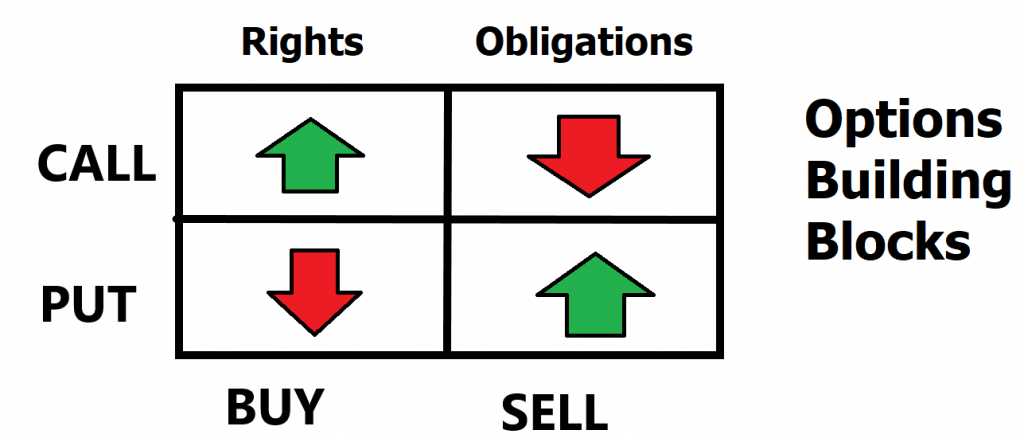
To understand options, we need to fully comprehend that these are instruments with limited lifespans and their risk characteristics depend entirely on whether a right or an obligation is being created.
OPTION BUYERS have rights. Not Obligations. In exchange for the rights that are being acquired they pay a premium to the creator or seller of the option who has an obligation. Stated another way, Option sellers or creators have obligations, not rights. In exchange for creating the obligation they receive a premium payment from the option buyer.
What often happens to new traders is that they focus only on the option buying side of the matrix above. A trader does not truly understand options until they also have thoroughly explored the option premium selling side of the matrix as well. By doing so, there is significantly more opportunity and a further understanding of how professionals manage risk.
A synthetic stock position is a type of trade constructed using options and other derivatives to simulate the performance of owning stock without buying or selling any equity. These positions can be used to replicate bullish, bearish, and neutral strategies. Creating a position involves writing put options (the right to sell) and/or call options (the right to buy) at different levels or series to recreate the financial performance of actually holding stock. Depending on what strategies are employed, traders may also benefit from less capital requirement, lower margin requirements with brokers, or create hybrid strategies that increase yield. Synthetic stock positions offer vast techniques for traders looking for innovative ways of navigating their favorite equities.
Creating a synthetic stock position using options is often done by traders who want to maximize their returns or hedge risk without having to purchase the underlying asset. There are several advantages that come with such an investment strategy, including increased flexibility in changing positions, the ability to purchase shares at a specific price (through call and put options), and increased returns through leveraging options contracts. On the other hand, creating a synthetic position can also bring some drawbacks – notably, higher risks associated with leverage, diminished liquidity when compared to owning the stock outright, and being exposed to margin calls in an adverse market. As such, any potential investors should assess both the benefits and risks of this type of investment carefully before committing funds.
Establishing a synthetic stock position could be an advantageous way to manage risk and reduce costs but can also create obligations. When one purchases a call option and sells a put option at the same strike price, it functions similarly as holding onto physical stock. This is because the obligations and rights remain the same, such as the obligation to sell stock when one writes a call or purchase stock when they write a put. It is therefore important to remember that if you have created this synthetic stock position, then depending on the movement of underlying asset prices, you may still be obligated to transact even without owning physical shares.
The following graphic illustrates a trader’s risk reward profile on a stock purchase. Let’s assume this trader is long 100 shares of ABC stock. This risk/reward profile is straightforward and linear. If the stock goes up the trader makes money. If the stock goes down the trader loses money.
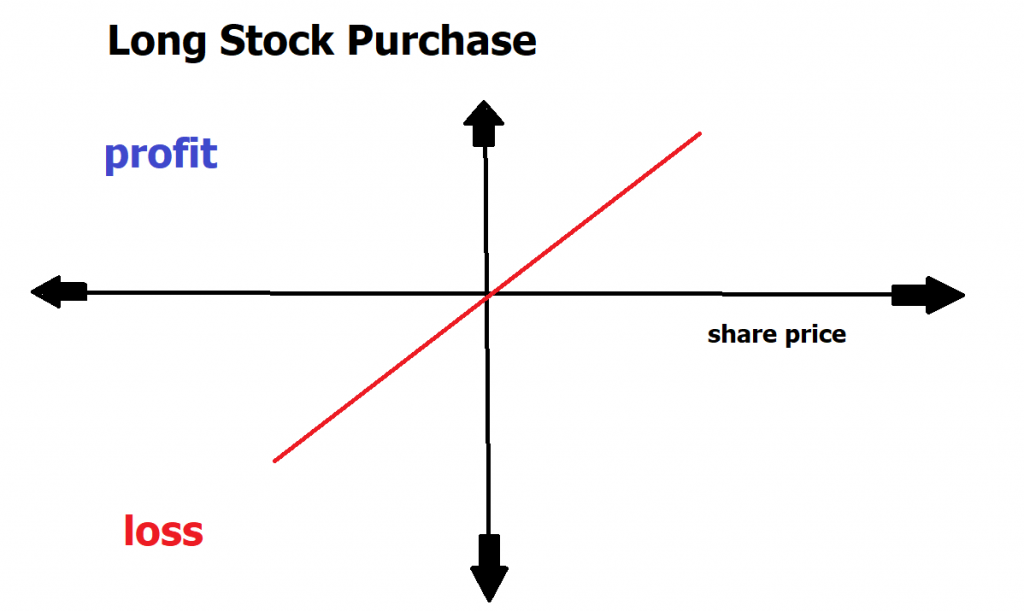
But let’s say the stock is trading at $500 a share. For a trader to buy 100 shares would require a $50,000 commitment in cash to hold the stock. An options trader looking to use their capital more efficiently will often look to the options market and create the exact risk reward profile as the stock by using options.
How?
By simultaneously purchasing an at the money call and selling at the money put.
When these two positions are combined the result is a synthetic long position which will mimic the risk reward profile of the long stock position.
Purchasing an at the money call gives the buyer the right but not the obligation to own the underlying stock. Selling an at the money put creates an obligation where you are obligated to buy the underlying stock at the strike price between now and expiration.
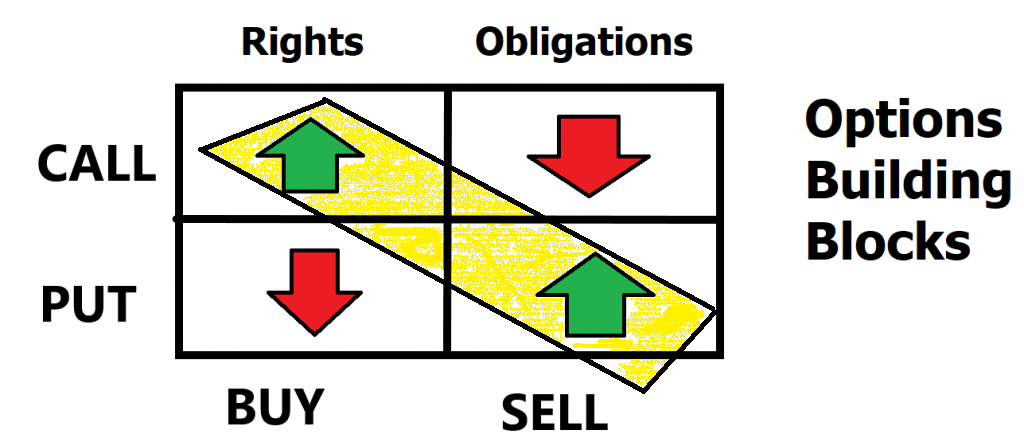
A fast way of understanding this is looking at the efficient use of capital. For example, ($AAPL) Apple is trading at $143. If a trader wants to trade 100 shares of $AAPL he would be required to have $14,300 shares in their trading account. Using Weekly options, they could construct the same risk reward profile by doing the following:
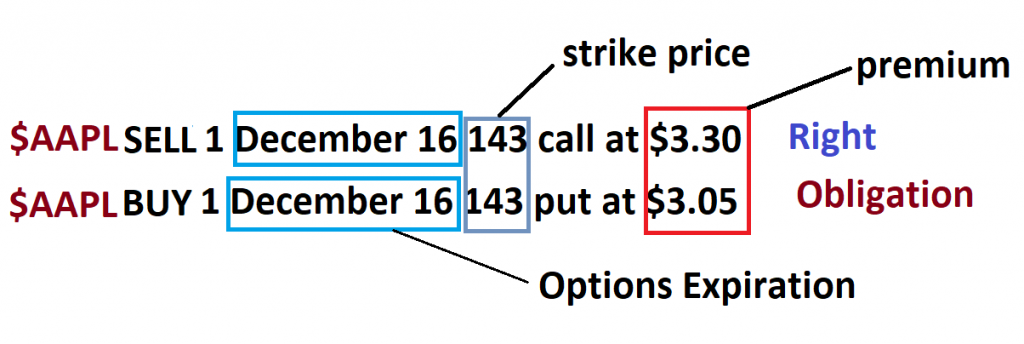
Every brokerage platform will have different margin requirements for this trade but what I can assure you is that this synthetic long options position will require much less than $14,300 to establish and will have similar profit and loss characteristics.
Seasoned options traders will often change the strike prices and expirations dates to create risk-reward profiles that enhance their probabilities of success even further.
One of the amazing things that has occurred in the last 50 years is the explosion of options trading opportunities. Options are traded in stocks, bonds, forex, commodities, and crypto, along with any other highly liquid marketplace. One of the tactics that many traders employ is hedging. Hedging is a form of trading that seeks to offset the risk of financial losses due to changes in the price of an asset or for any other uncertain event. The focus of hedging is to limit or reduce potential losses and/or gain potential profits. Hedging strategies can involve complex investments such as options, futures, forwards, and swaps, but can also take on more basic forms like buying insurance. Ultimately, it works by providing protection against volatility and limiting downside losses while taking advantage of market opportunities. With thoughtful analysis and smart risk management, hedging has become increasingly popular in today’s investing culture.
Simply defined, a complete hedge is an equal and complete opposite position in the market. To understand this concept, imagine a large trader who has been long stock and is profitable. They could liquidate the stock and just choose to be out of the market. Or they could establish a hedge where they are short as much stock as they are long, thereby eliminating all future risk while the hedge is in place. Regardless of how the stock moves in the future they are insulated from any further price risk.
One of the most effective ways of hedging is through the creation of a short sale synthetic stock position using options.
Let me explain.
The profit and loss characteristics of a short stock position look like this.
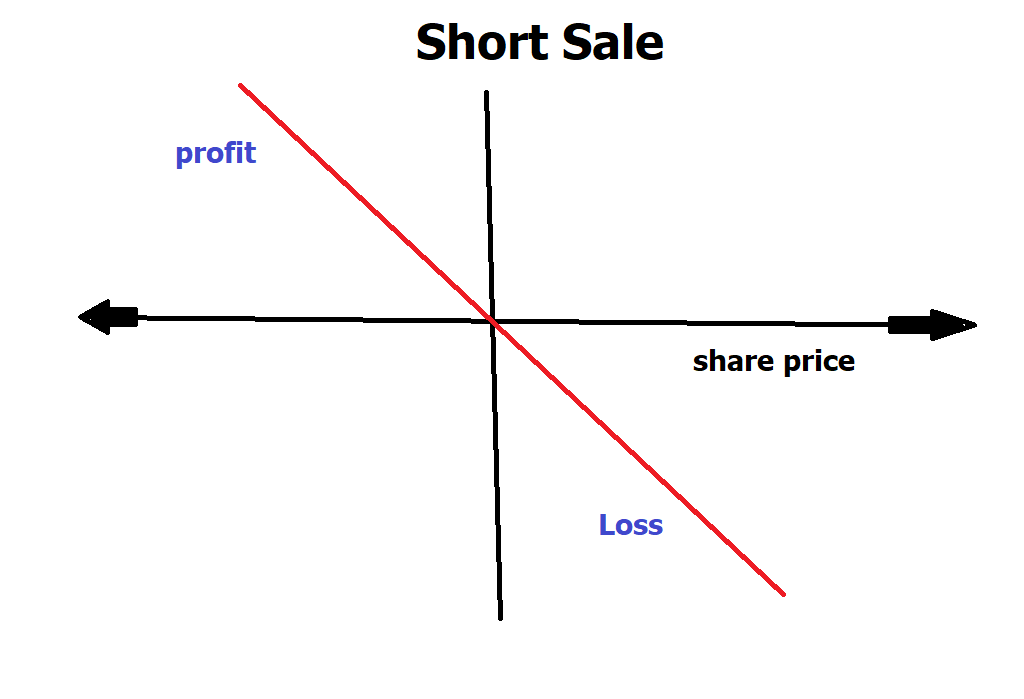
If we go back to the options matrix, we can create a synthetic short position by purchasing a put option and simultaneously selling a call option. By purchasing a put option the trader has a right and not the obligation to be short the stock at the strike price of $143 between now and an expiration date. By selling the call option the trader has created an obligation to make delivery of the shares at the $143 strike price between now and the expiration date.
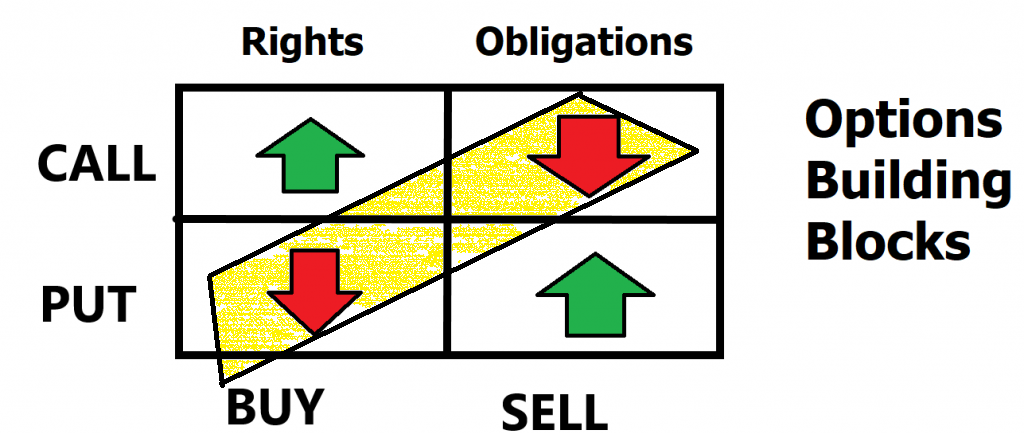
Let’s Apply this to Apple ($AAPL) once again.
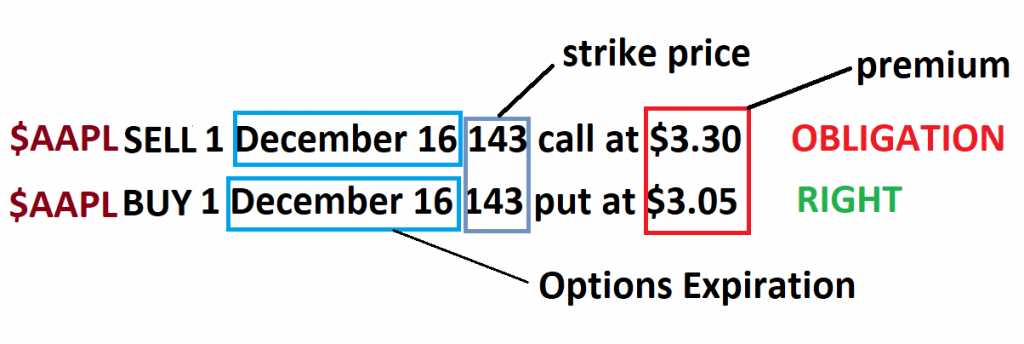
Synthetic options positions are easy to create. Traders occasionally place these types of trades to insulate their positions from adverse volatility. Trading volatility is one of the most important concepts for traders to understand. Volatility refers to the degree of variation in price that a given asset experiences over a given period. Markets with higher volatility tend to be riskier and can provide more opportunities for lucrative trades but can also lead to greater losses if a trader isn’t careful. Low-volatility markets require more patience as it may take longer for price movements to generate profitable opportunities, however they usually present minimal risk.
It is worthy of your time to study this options trading tactic because it could assist you in using your trading capital more efficiently. Remember that whenever you create an option by selling premium, you are in fact creating an obligation that requires you to fulfil the terms of that agreement. This can create theoretical unlimited risk and requires prudent money management to be successful.
I hope you never look at Options the same way again and begin to explore the possibilities of the Options transaction.
Learning all the skills involved in options trading within the financial markets has been proven to have a variety of advantages. For starters, success in the financial markets relies heavily on understanding how to manage risk. Developing this knowledge puts options traders in a good position to manage their investments more effectively and reduce losses that could occur due to lack of knowledge. Furthermore, when traders are equipped with thorough knowledge about these tools, they can confidently make decisions that reflect probability-based strategies rather than short-term speculation. Through becoming adept in options trading under different conditions, one can better gauge market trends and take advantage of potentially lucrative opportunities. Thus, learning all the ins and outs related to derivatives such as options trading could be beneficial for both amateur and experienced investors alike.
The sign of a great trader is not how much they make when they are right, but rather how little they lose when they are wrong. When you combine options trading with a.i. the potential is very exciting for the educated trader.
Opportunities abound to exploit time decay and volatility, but it all starts with having a firm understanding of risk and how to effectively manage it.
Artificial intelligence is so powerful because it learns what doesn’t work, remembers it, and then focuses on other paths to find a solution. This is the Feedback Loop that is responsible for building the fortunes of every successful trader I know.
If you think about this question, you will begin to appreciate that A.I. applies mistake prevention to discover what is true and workable. Artificial Intelligence applies mistake prevention as a continual process 24 hours a day, 365 days a year towards whatever problem it is looking to solve.
That should get you excited because it is a game-changer.
It sounds very elementary and obvious. But overlooking the obvious things often hurts a traders’ portfolio.
The basics are regularly overlooked by inexperienced traders.
The beauty of neural networks, artificial intelligence, and machine learning is that it is fundamentally focused on pattern recognition to determine the best move forward. When these technologies flash a change in forecast it is newsworthy. We often do not understand why something is occurring but that does not mean that we cannot take advantage of it.
A.I., through advanced pattern recognition, analyzing hundreds of thousands of data points, and crunching millions of computations, finds the highest probability trades and is indispensable in separating fact from fiction.
Artificial intelligence has decimated humans at Poker, Jeopardy, Go! and Chess. Why should trading be any different?
Intrigued? Visit with us and check out the A.I. at our Next Live Training.
Discover why artificial intelligence is the solution professional traders go-to for less risk, more rewards, and guaranteed peace of mind.
It’s not magic. It’s machine learning.
IMPORTANT NOTICE!
THERE IS SUBSTANTIAL RISK OF LOSS ASSOCIATED WITH TRADING. ONLY RISK CAPITAL SHOULD BE USED TO TRADE. TRADING STOCKS, FUTURES, OPTIONS, FOREX, AND ETFs IS NOT SUITABLE FOR EVERYONE.
DISCLAIMER: STOCKS, FUTURES, OPTIONS, ETFs AND CURRENCY TRADING ALL HAVE LARGE POTENTIAL REWARDS, BUT THEY ALSO HAVE LARGE POTENTIAL RISK. YOU MUST BE AWARE OF THE RISKS AND BE WILLING TO ACCEPT THEM IN ORDER TO INVEST IN THESE MARKETS. DON’T TRADE WITH MONEY YOU CAN’T AFFORD TO LOSE. THIS ARTICLE AND WEBSITE IS NEITHER A SOLICITATION NOR AN OFFER TO BUY/SELL FUTURES, OPTIONS, STOCKS, OR CURRENCIES. NO REPRESENTATION IS BEING MADE THAT ANY ACCOUNT WILL OR IS LIKELY TO ACHIEVE PROFITS OR LOSSES SIMILAR TO THOSE DISCUSSED ON THIS ARTICLE OR WEBSITE. THE PAST PERFORMANCE OF ANY TRADING SYSTEM OR METHODOLOGY IS NOT NECESSARILY INDICATIVE OF FUTURE RESULTS. CFTC RULE 4.41 – HYPOTHETICAL OR SIMULATED PERFORMANCE RESULTS HAVE CERTAIN LIMITATIONS. UNLIKE AN ACTUAL PERFORMANCE RECORD, SIMULATED RESULTS DO NOT REPRESENT ACTUAL TRADING. ALSO, SINCE THE TRADES HAVE NOT BEEN EXECUTED, THE RESULTS MAY HAVE UNDER-OR-OVER COMPENSATED FOR THE IMPACT, IF ANY, OF CERTAIN MARKET FACTORS, SUCH AS LACK OF LIQUIDITY. SIMULATED TRADING PROGRAMS IN GENERAL ARE ALSO SUBJECT TO THE FACT THAT THEY ARE DESIGNED WITH THE BENEFIT OF HINDSIGHT. NO REPRESENTATION IS BEING MADE THAT ANY ACCOUNT WILL OR IS LIKELY TO ACHIEVE PROFIT OR LOSSES SIMILAR TO THOSE SHOWN.




